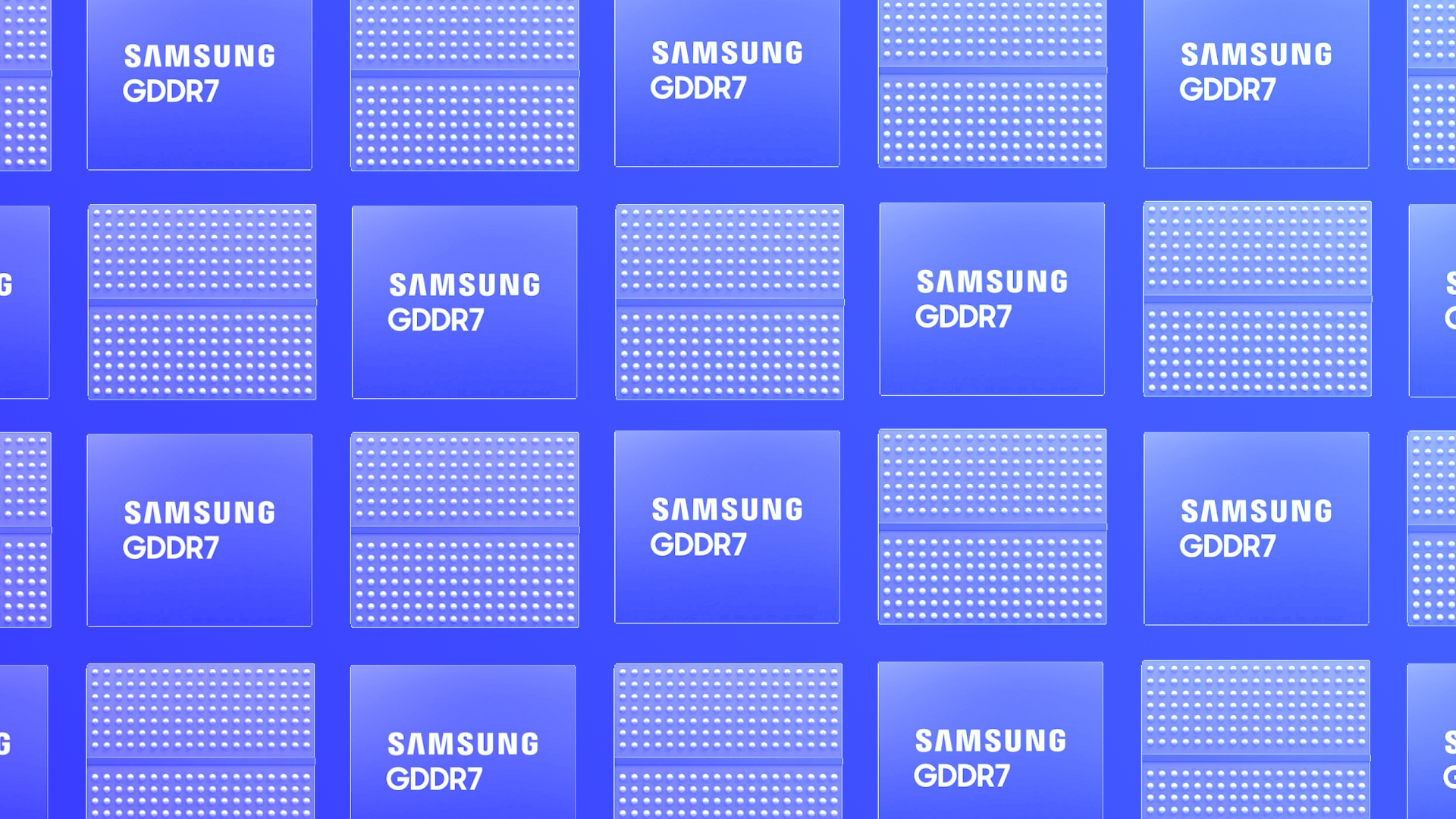Samsung finalises the first GDDR7 memory for next-gen graphics cards
Who will ship the tech first is another matter.

Samsung now grasps the flag in the race toward next-gen GDDR7 VRAM, having developed the industry's first GDDR7 module. With the development stage complete, we're just waiting to see which of the top memory manufacturers will push it to market first.
Samsung teased us with GDDR7 late last year, with the promise to improve performance over the current GDDR6 and GDDR6X. At the annual tech day, the prototype hit speeds of 36Gbps against its predecessor's initial 14Gbps.
Interestingly, Samsung's GDDR7 DRAM utilises something called PAM-3 (pulse-amplitude modulation) signalling. It's a revision in-between the PAM-2 and PAM-4 tech used in GDDR6 and GDDR6X respectively to translate data into non-binary waveforms. It's played a big part in improving the performance, and was expected to give GDDR7 a 25% boost to efficiency, and increasing speeds at any given bandwidth by half.
The final design didn't quite manage to hit the 36Gbps mark as intended, but maximum boost speeds of 32Gbps per pin are nothing to sniff at. Usually we see memory chips evolve over time to hit higher speeds, so give it time and we'll likely see the same here. The new chip features 1.4 times the bandwidth, a 20% improvement in power efficiency, and even a 70% reduction in thermal resistance over its predecessor.
Of course, the expected applications listed include the potential to "expand into future applications such as AI," but that doesn't mean gamers won't benefit from tech like this hitting markets. Especially when the numbers, while slightly less impressive than what was projected, are a massive improvement over GDDR6 and GDDR6X.
Samsung is aiming for the first GDDR7 products to hit in late 2023, whereas their main competitor Micron is expected to introduce next-gen G7 products in "the first half of calendar year 2024." We'll see if this little announcement inspires Micron to get a move on.
Best CPU for gaming: Top chips from Intel and AMD.
Best gaming motherboard: The right boards.
Best graphics card: Your perfect pixel-pusher awaits.
Best SSD for gaming: Get into the game first.
Keep up to date with the most important stories and the best deals, as picked by the PC Gamer team.

Screw sports, Katie would rather watch Intel, AMD and Nvidia go at it. Having been obsessed with computers and graphics for three long decades, she took Game Art and Design up to Masters level at uni, and has been rambling about games, tech and science—rather sarcastically—for four years since. She can be found admiring technological advancements, scrambling for scintillating Raspberry Pi projects, preaching cybersecurity awareness, sighing over semiconductors, and gawping at the latest GPU upgrades. Right now she's waiting patiently for her chance to upload her consciousness into the cloud.


